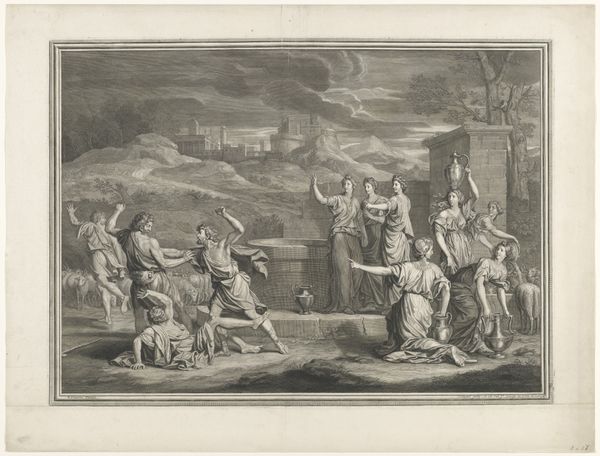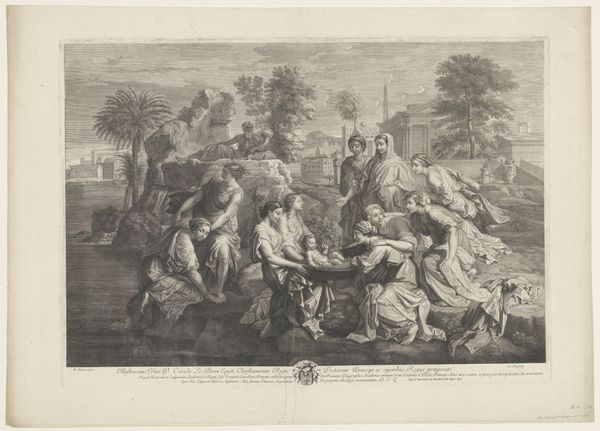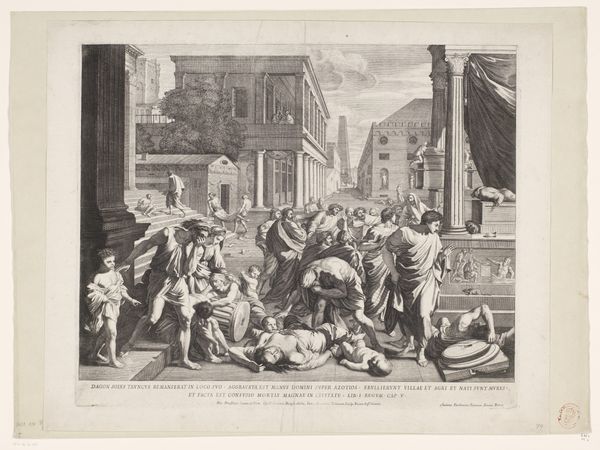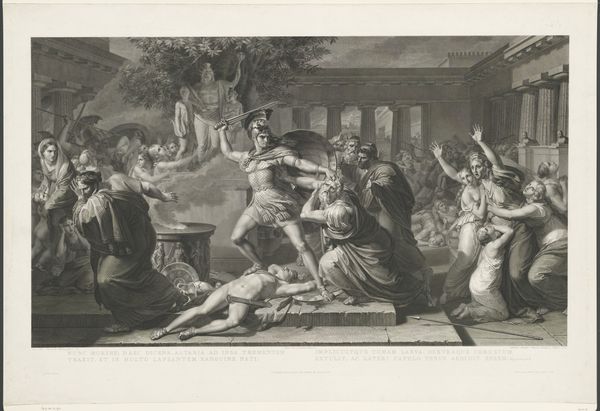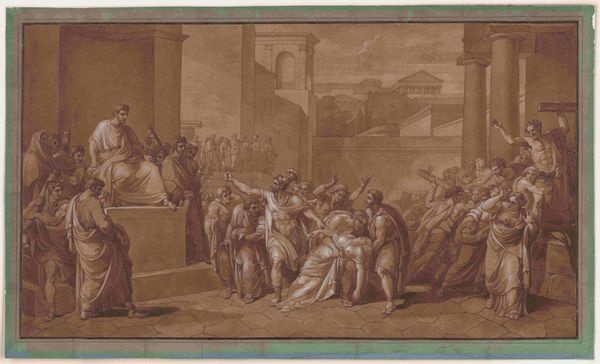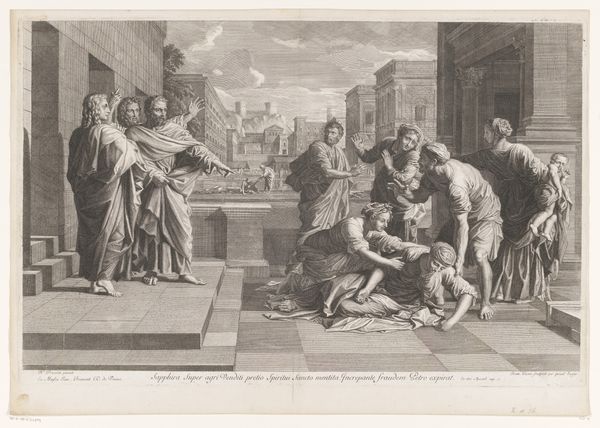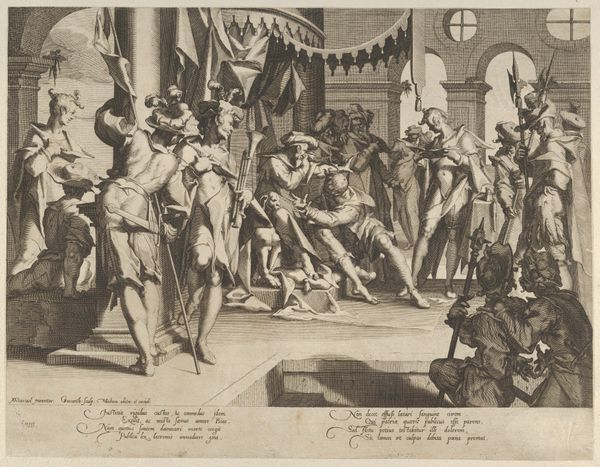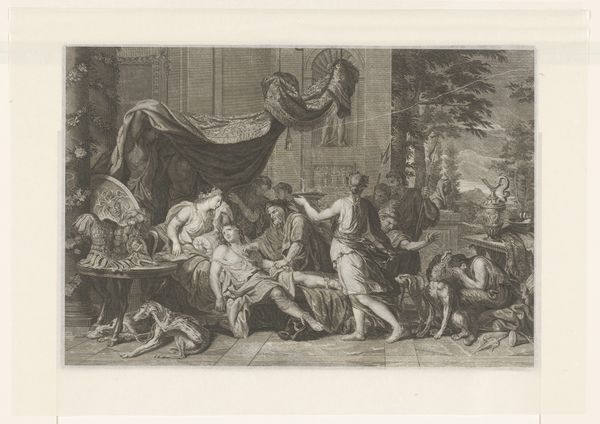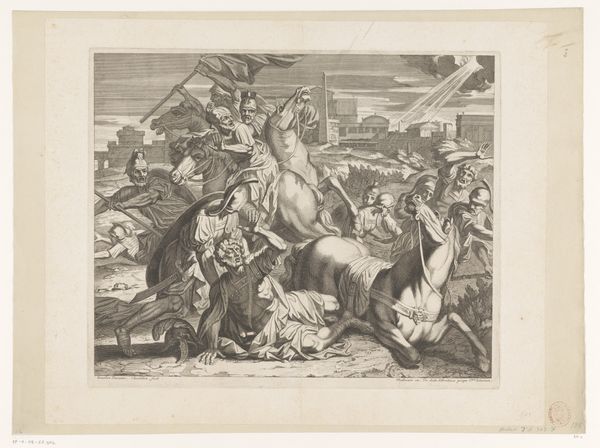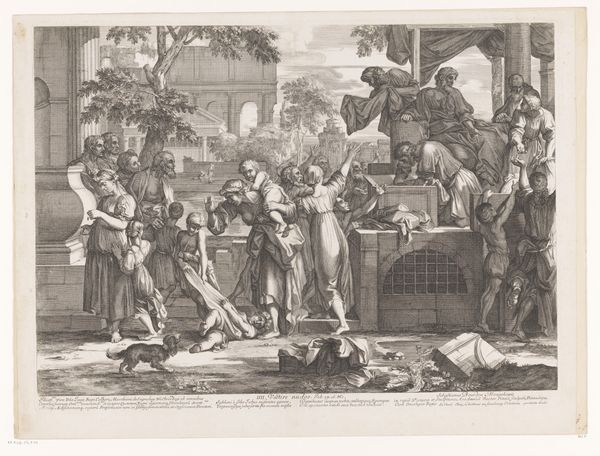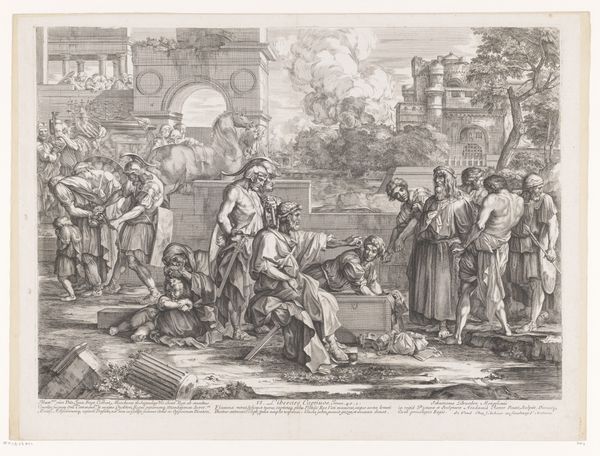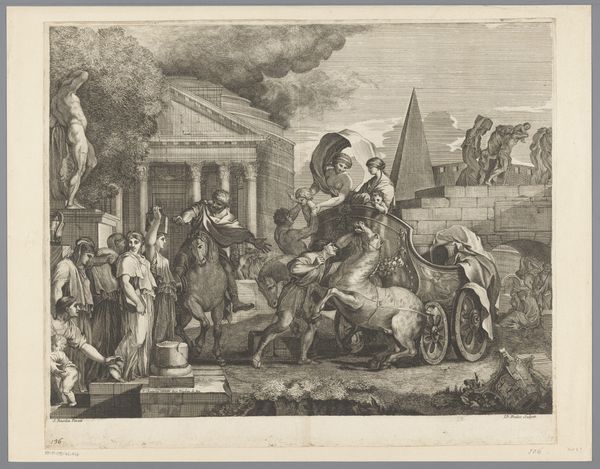
print, engraving
#
baroque
# print
#
old engraving style
#
caricature
#
cityscape
#
history-painting
#
engraving
Dimensions: height 433 mm, width 538 mm
Copyright: Rijks Museum: Open Domain
Editor: This is Jean Baron’s "Pest bij de Filistijnen," created after 1645. It's an engraving with incredible detail, and it immediately strikes me as chaotic and despairing. People are suffering in the streets. What can you tell me about it? Curator: It's crucial to see this work within its historical context. Epidemics were rampant in the 17th century. But, how does the "Pest" as a concept resonate with socio-political upheavals of that era, reflecting power imbalances and social anxieties? Notice the idealized classical setting juxtaposed with scenes of human suffering. It evokes the pervasive narrative of divine retribution against societal sin. Who is being punished, and why? Editor: The figures seem to be dressed in Roman-esque attire... Maybe the artist is making a commentary on the downfall of empires? Curator: Perhaps. However, remember, these are Philistines, not Romans. Think about the religious and political implications of depicting a non-Christian people plagued by illness. It begs us to consider not just the empire's decline but also colonial power dynamics. Is this merely a cautionary tale, or does it engage with broader themes of cultural superiority and disease as a weapon – consciously or unconsciously? How can we interpret this work using contemporary intersectional frameworks? Editor: So, it's not just about the disease, but also about who is experiencing it and how that is framed. Curator: Exactly! Considering that the artist was working after the rise of European colonial powers, does the artwork participate in a rhetoric that justifies domination? It certainly raises difficult questions about representation and the politics of suffering. Editor: I never considered it that way before! I came into it with an aesthetic viewpoint, but seeing the image within these power dynamics makes me rethink its message entirely. Thank you. Curator: Indeed. It's about expanding our thinking about these artworks, and examining it within the larger social context of how this image, and others like it, reflects identity, gender, race, and politics.
Comments
No comments
Be the first to comment and join the conversation on the ultimate creative platform.
